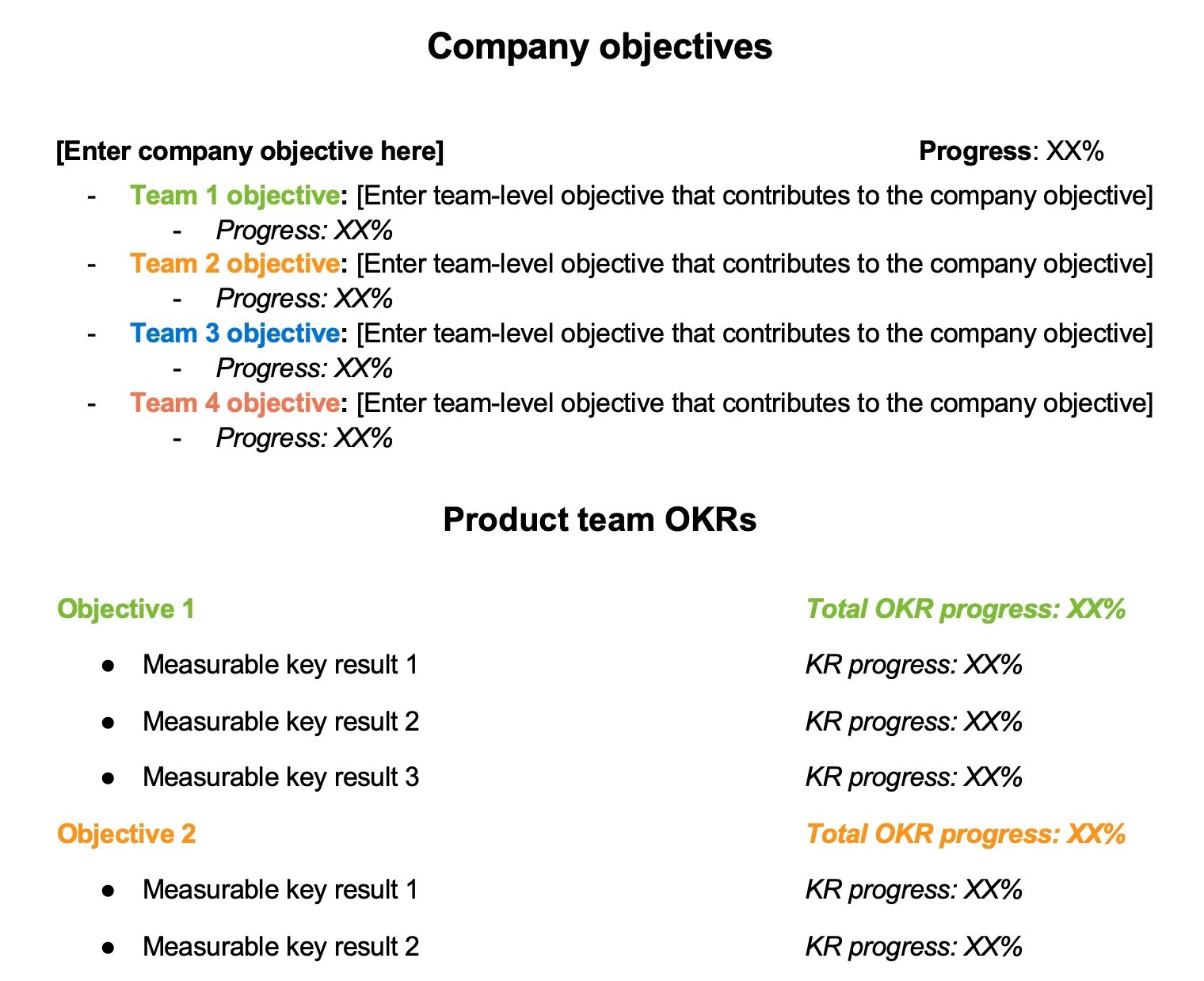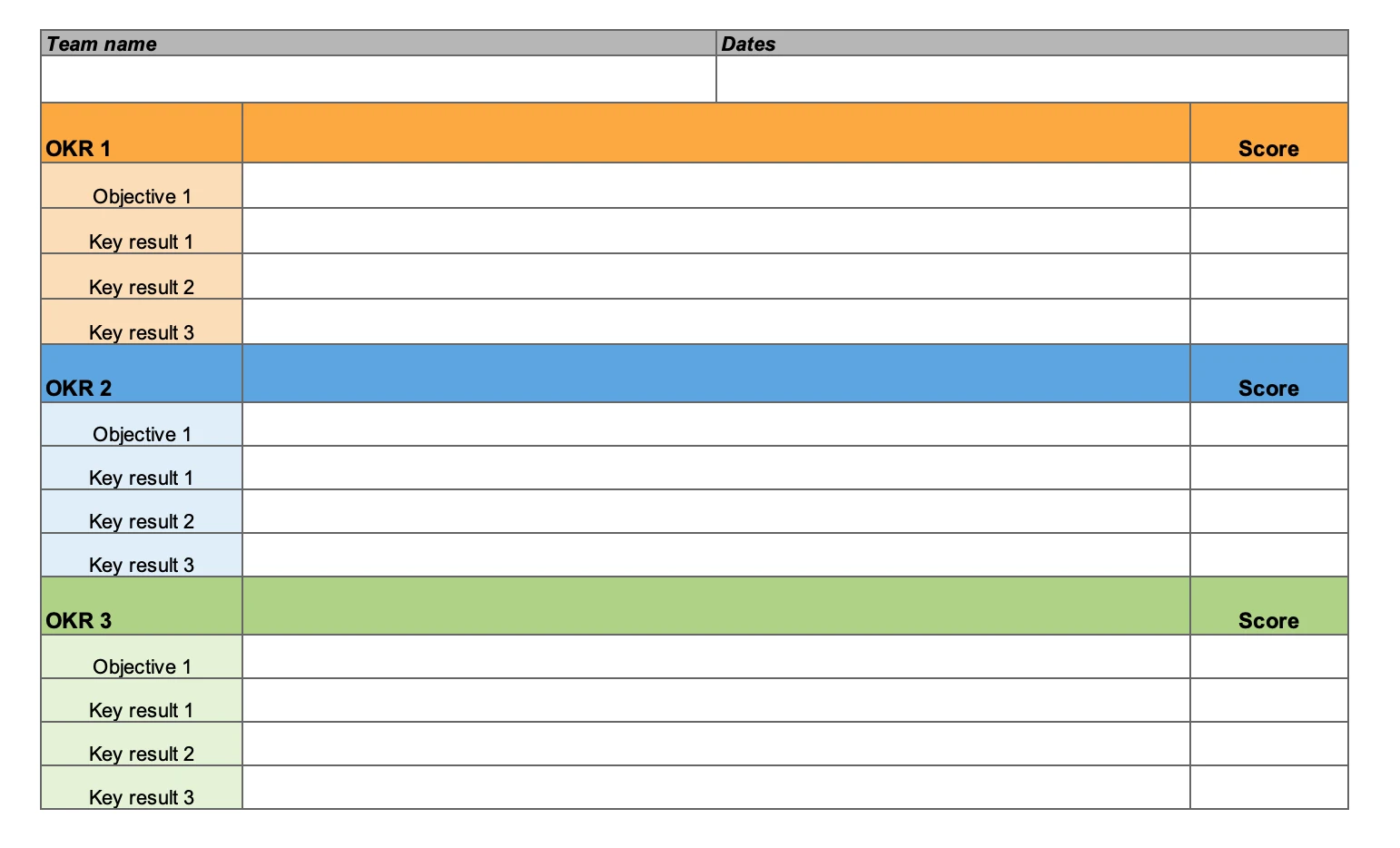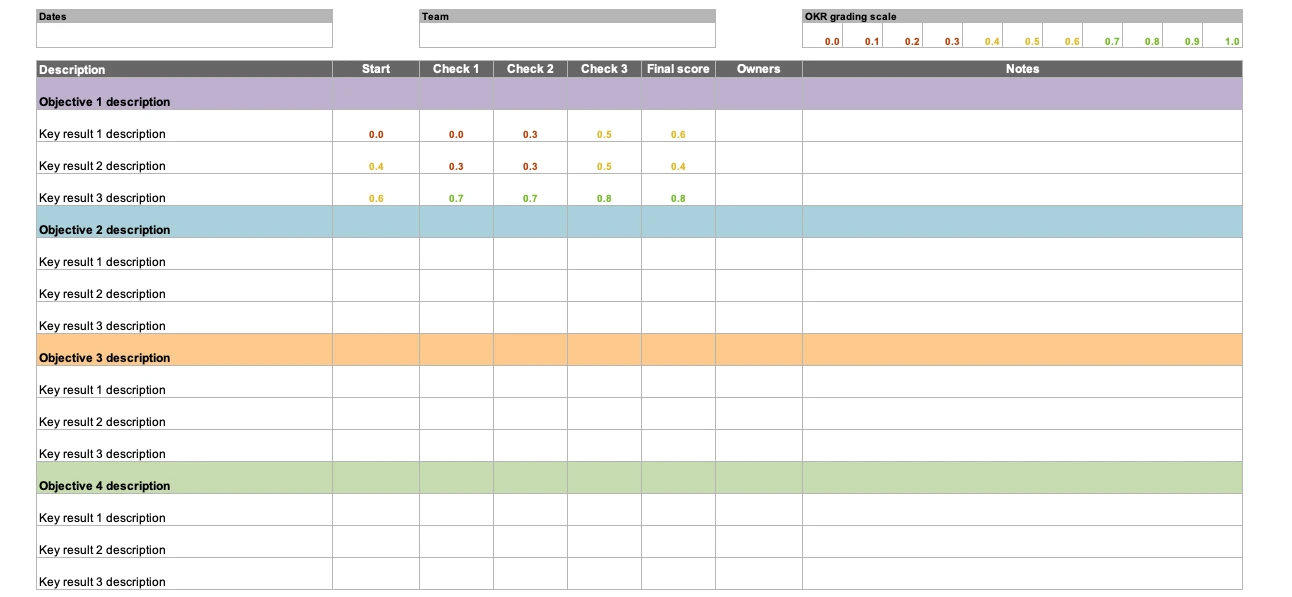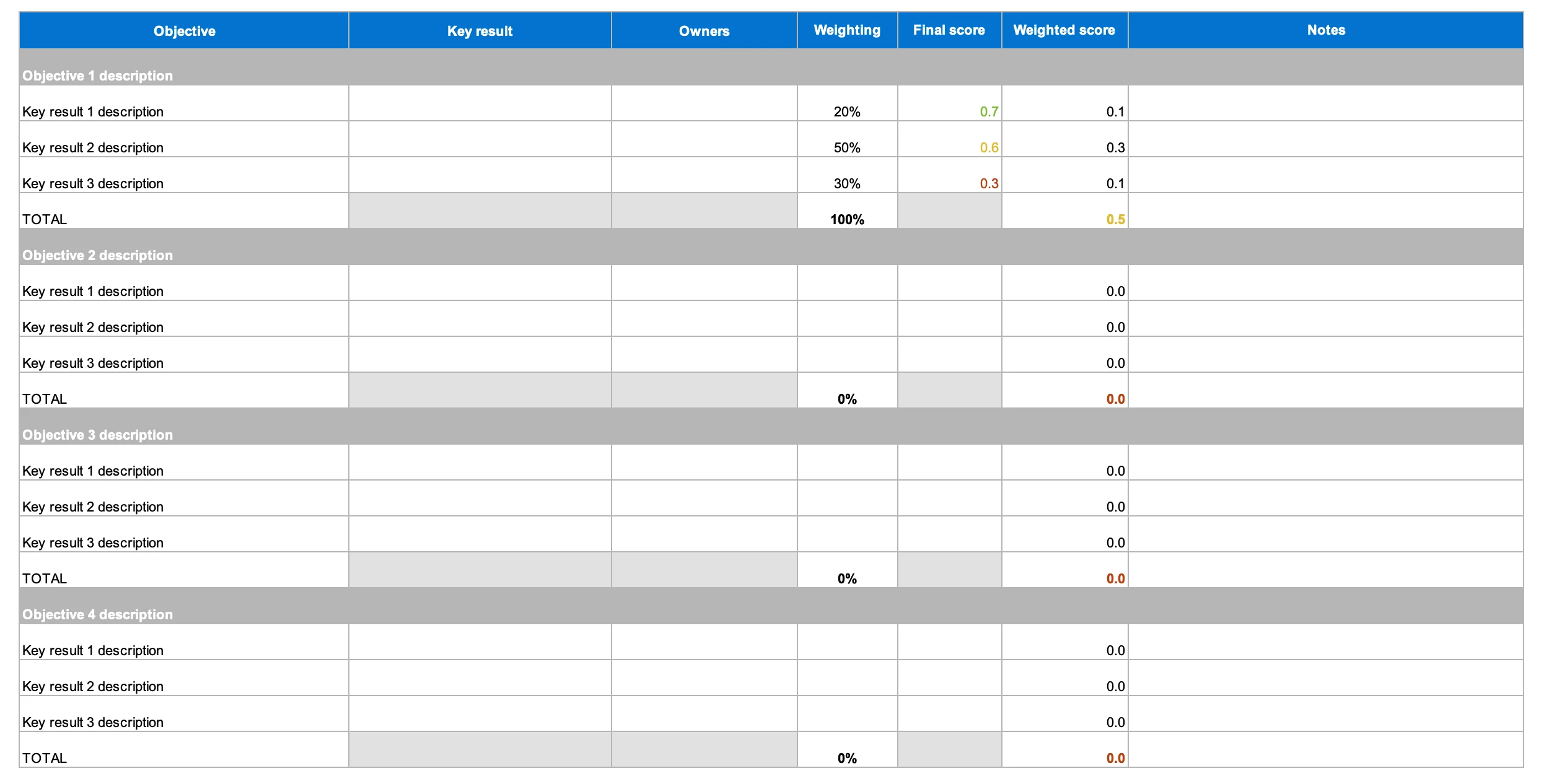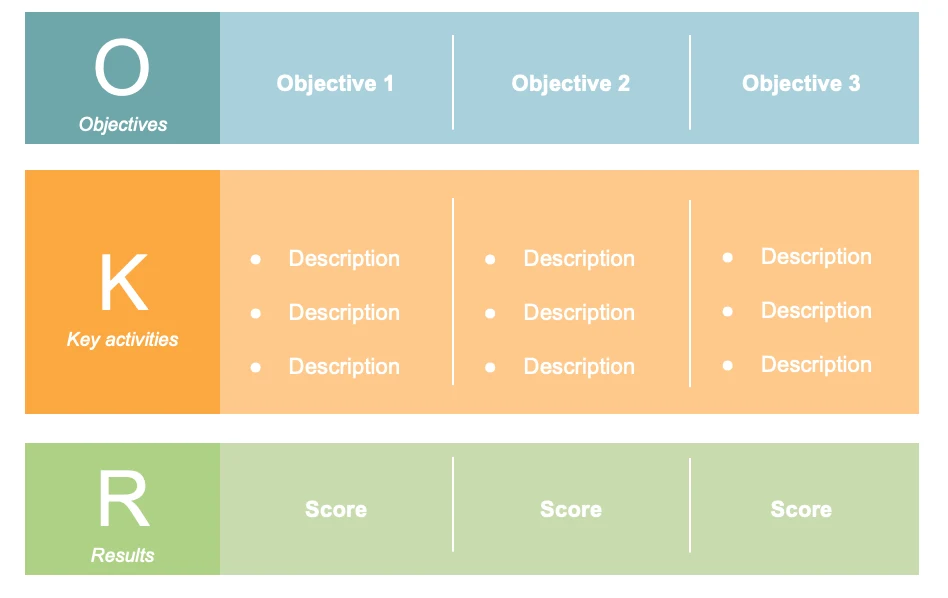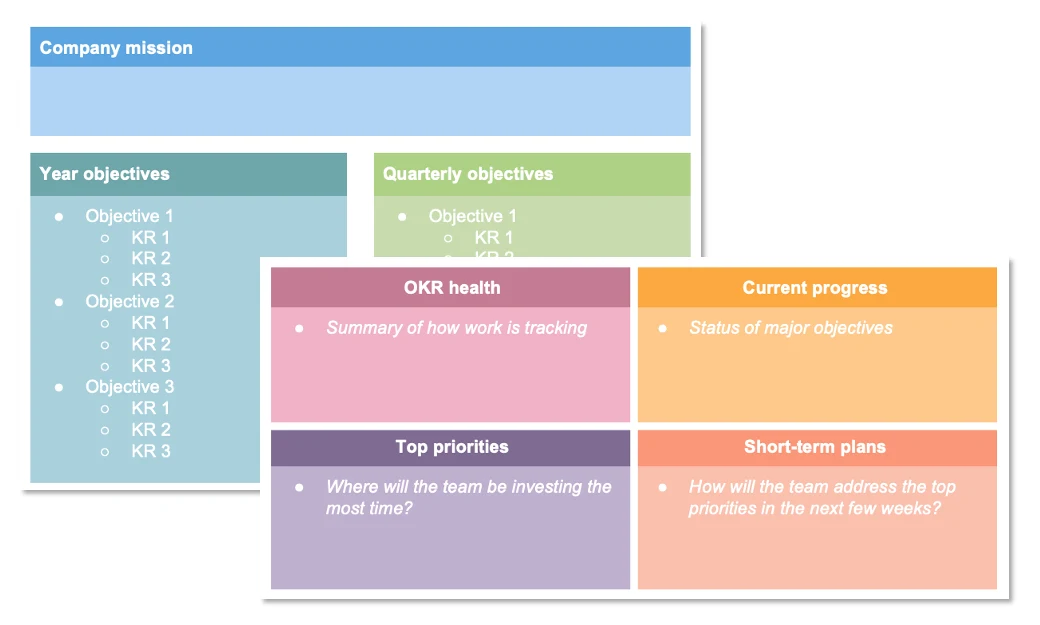7 OKR templates for product teams
You know what you want to achieve and why it matters. This is your vision. Now, how will you get there? As a start, you need to define what success means to you so you can figure out the work to be done. That means setting concrete goals and performance metrics.
To do this, product teams use various goal-setting templates — and the objectives and key results (OKRs) framework is one of the most popular. OKRs pair a desired outcome with key metrics that indicate achievement. They can be defined at the business, product, team, or individual level for any type of work. When it comes to product development, OKRs are often centered around improving product adoption, usage, and growth among customers.
With Aha! Roadmaps, you can set these OKRs at every level of the organization — aligning larger business goals with product goals and the work of individual teams. You can even visualize everything with an OKR roadmap. If you prefer a more lightweight option, this OKRs template pictured below is a great way to get started. You can also try the downloadable templates for Word, Excel, or PowerPoint below.
Set product team OKRs in Aha! software. Sign up for a free trial.
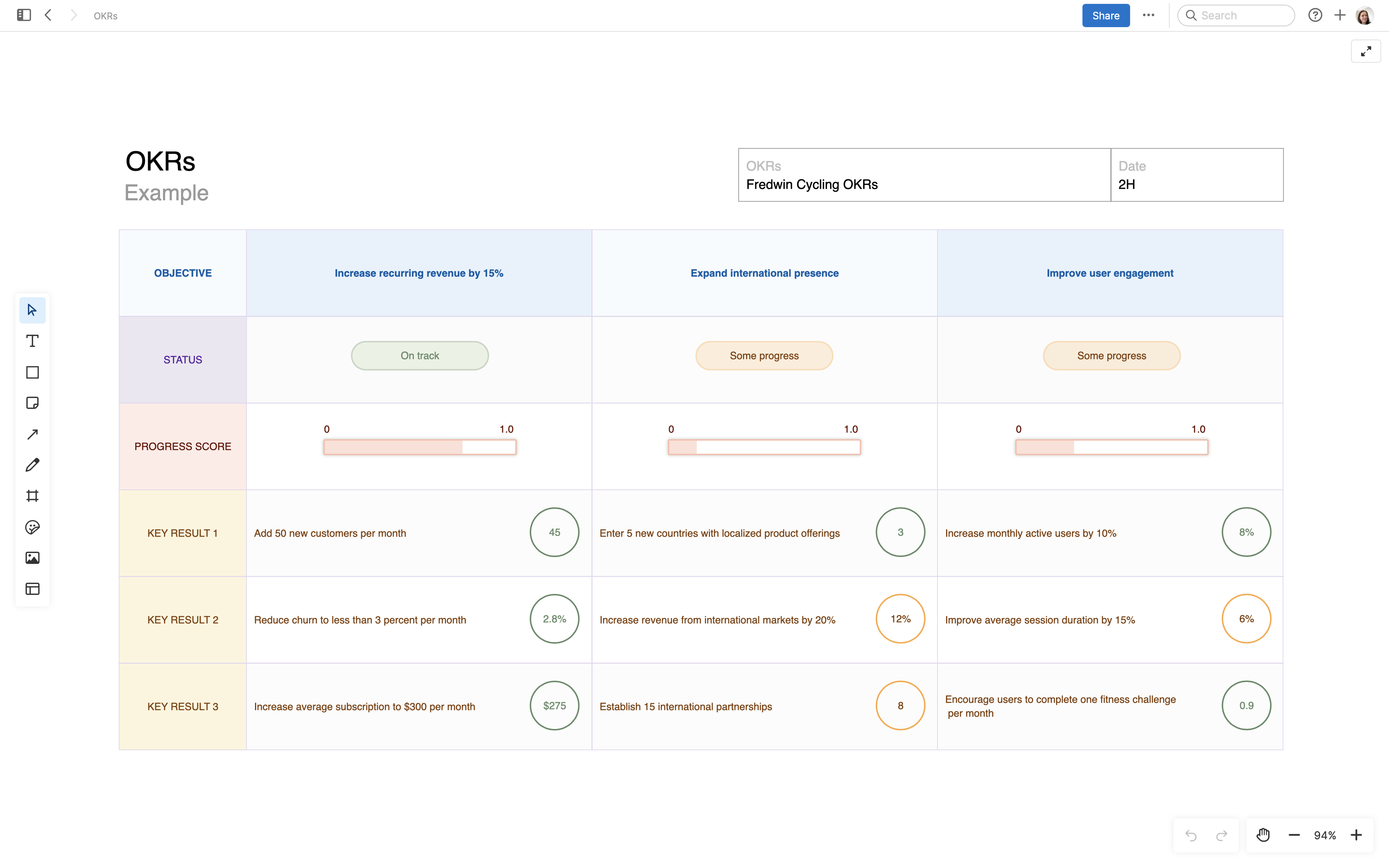
Jump ahead in this guide:
What are objectives and key results (OKRs)?
If you are new to strategic planning, it can be helpful to understand the history behind OKRs. Preceding OKRs was the concept of management by objective (MBO) — first introduced by management consultant Peter Drucker in the 1950s. The idea was to improve employee engagement by giving people a voice in their professional goal-setting. Inspired by the MBO model, CEO of Intel Andy Grove developed OKRS in the 1970s — later to be popularized by John Doerr when he introduced them at Google.
In Andy Grove's book High Output Management he outlined the OKR system with two simple questions:
Where do I want to go? (Objective)
How will I pace myself to see if I am getting there? (Key results)
The idea is to plan what you will achieve (an objective) alongside your measurements for success (key results). As you progress, each objective is given a score from 0.0 to 1.0 — scoring between 0.7 and 1.0 indicates the objective is nearly or fully achieved. This helps you track how work is going and adjust your priorities if needed.
When you use OKRs company-wide, it helps to align the entire organization around shared targets. A clearer understanding of priorities helps everyone make better decisions about where to invest time and resources. Plus, connecting business, team, and individual OKRs can show how smaller units of work impact overall organizational success.
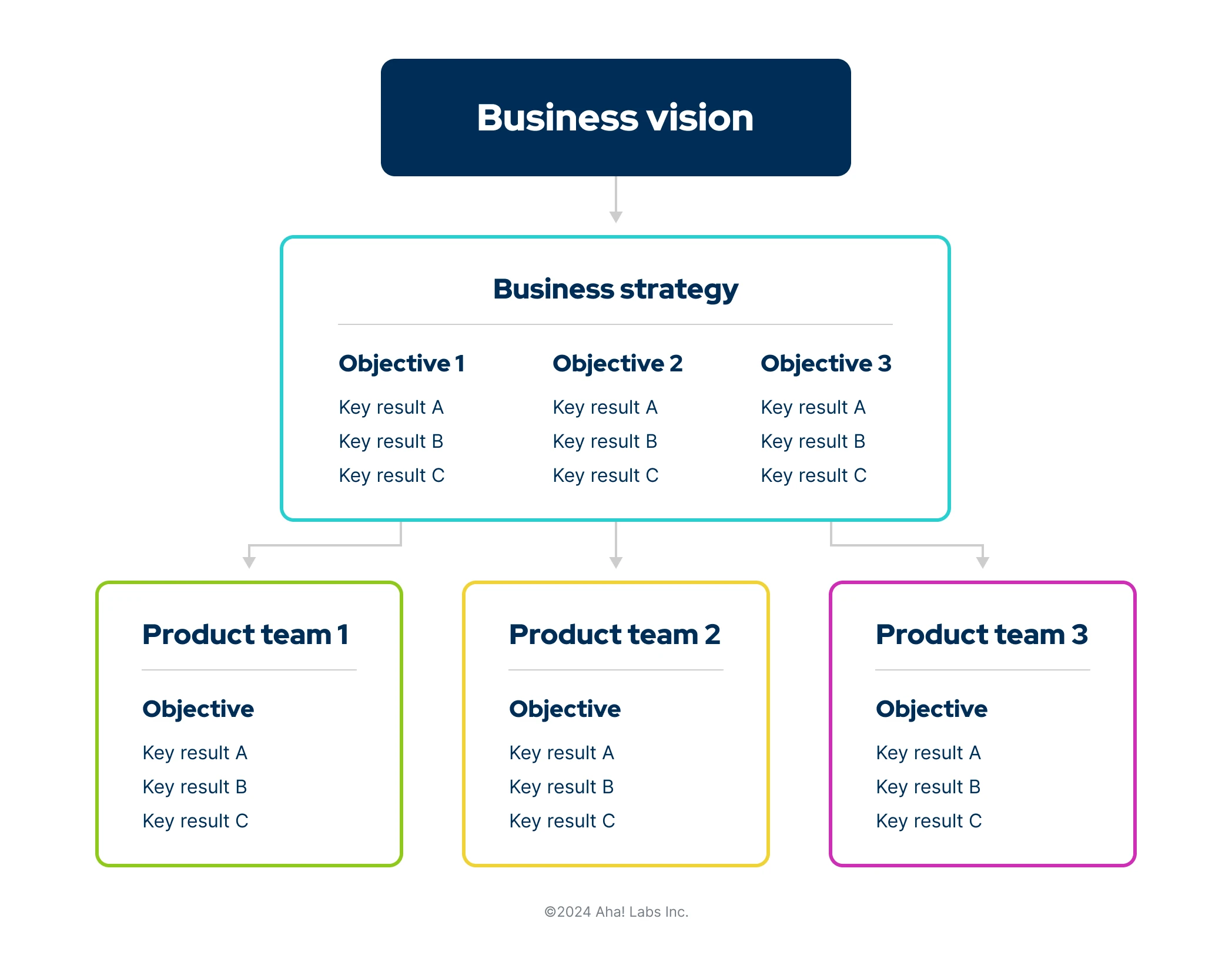
Customizable OKR templates
To get started with writing your own, try these six downloadable OKR templates. These are flexible templates that you can customize for your own team's objectives and metrics. If you need a more in-depth overview of how to set product-specific OKRs, jump to the section below.
1. Simple OKR template
This basic OKR template follows the most common format — making it simple to get started quickly. List company-level and team objectives in the top section and product-specific objectives and results in the bottom section.
2. Team OKR template
Use this template to write team-level OKRs in more detail. You might designate shared OKRs for the product team or even specify OKRs for product managers versus engineers, for instance. By assigning a set of OKRs for different team members to own, you can divide responsibilities while also viewing team-wide progress.
3. OKR confidence tracker template
This OKR template helps you gauge results at different checkpoints throughout the month or quarter. Typically, confidence trackers are used to forecast progress. You would assign a score of 0.0 to 0.3 if the OKR is at risk, a score of 0.4 to 0.6 if the OKR is lagging but still achievable, and 0.7 to 1.0 if you are confident that you will achieve the OKR by its intended deadline. Although a confidence tracker measures sentiment, it is not subjective. Scores should still be based on real results and progress.
4. Weighted OKR template
A weighted OKR template gives you the flexibility to calibrate results based on the significance of the goal. Determine your own weighting in the spreadsheet and the scores will automatically adjust.
5. OKR simple presentation template
This template provides a streamlined way to display your OKRs in a presentation. It adds a layer labeled "key activities" so you can share planned work with cross-functional groups.
6. OKR detailed presentation template
Sometimes you may want to share OKRs with company leaders and colleagues. This presentation template gives you space to add annual and quarterly objectives, as well as top priorities and upcoming plans. Adjust the colors to match your brand and go from there.
How to set product OKRs
Let's review how to write product OKRs with step-by-step instructions. Note that setting OKRs for other purposes or teams can follow a similar process.
1. Understand business objectives: High-level company goals will guide you in creating your product strategy and identifying specific areas of investment. Some common examples of business objectives include increasing revenue or reducing churn by a certain amount.
2. Set product goals: Each product goal should link back to a business objective. For instance, if one of your company goals is to increase revenue by $5 million over the next quarter, you can establish a corresponding product goal to increase annual recurring revenue (ARR) by a certain percentage.
3. Define success metrics: Company leaders and the product development team should cooperate on how to best quantify success. Examples of key results for a SaaS product include adding a certain number of new customers each month or reducing new user churn by a certain percentage per month. Many teams use a product value scorecard to further measure and prioritize the value each piece of work will deliver.
4. Determine product initiatives: Now that you have your product objectives and the key results you are aiming for, it is time to clarify how you will actually achieve those results. This is where product initiatives come in — they are the broad themes or areas of work the product team will pursue in order to achieve each goal. Examples of initiatives include improving users' mobile experience and enhancing specific product capabilities.
5. Map out corresponding epics, releases, and features: Each initiative will likely have its own epics, releases, and features. By linking each of these units of work on your product roadmap to a company objective, product goal, and product initiative, you ensure that the team is focused on what is most impactful to the business.
6. Track metrics over time: Creating an OKR is not a one-time exercise. You must regularly review your OKR to make sure you are attaining the results you want. Some product teams discuss their objectives and key results in weekly or biweekly meetings, while others track progress on a monthly or quarterly basis.
How do product managers use OKRs?
The best product managers employ a goal-first approach. And OKRs give you a framework to do just that — pairing product objectives with the key results that will demonstrate achievement. Here is an example. Say your company has a business goal of increasing revenue. You will want to establish a product goal that connects back to it:
Business objective: Increase company revenue by $X
Product objective: Increase annual recurring revenue (ARR) by X percent
With the help of company leaders and the product team, you will also need to determine how to quantify and measure success. For instance, potential key results for a SaaS product could be the following:
Key result 1: Add X new customers per month
Key result 2: Reduce new user churn to less than X percent per month
Key result 3: Increase average subscription to $X per month
Once you have defined your objectives and key results, you can plan the initiatives and major areas of delivery that will help you reach your goals. You should connect your goals all the way down to the feature level — so that you can prioritize what will bring the most value to your customers and the business.
The downloadable OKR templates in this guide are a great starting point. But strategic planning is even more effective when it is tied to your product roadmap. Try writing your OKRs in Aha! Roadmaps — where you can connect your goals to the actual work and build your product plans all in one place.
Set brilliant strategy, prioritize features, and share visual plans with Aha! Roadmaps. Get started with a free 30-day trial.
